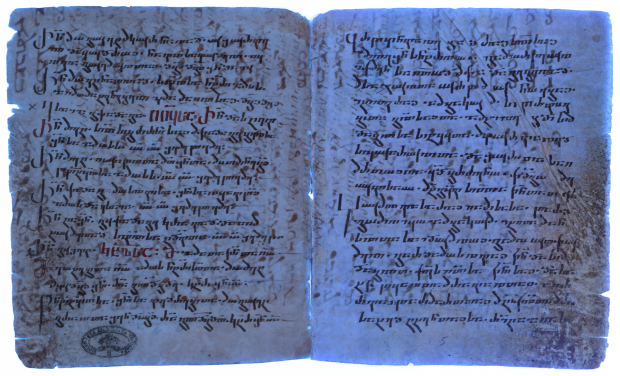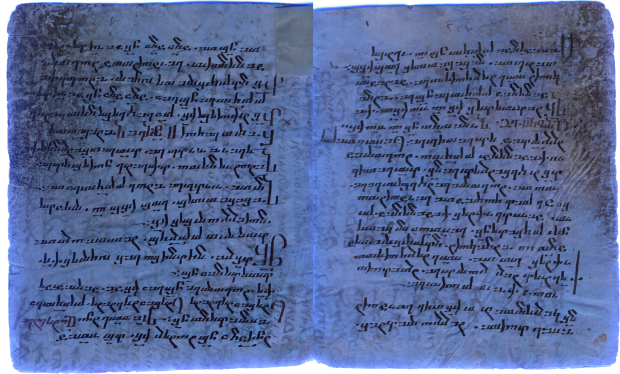[ad_1]
Scientists using ultraviolet photography have made an intriguing discovery in the field of biblical studies.

VIEW GALLERY – 3 IMAGES
They have found an ancient version of a chapter from the Bible that had been hidden beneath another section of text for over 1,500 years. Historian Grigory Kessel from the Austrian Academy of Sciences unveiled this groundbreaking finding in an article published in the prestigious journal New Testament Studies.
According to Kessel, “The manuscript offers a ‘unique gateway’ for researchers to understand the earliest phases of the Bible’s textual evolution. It shows some differences from modern translations of the text.” Kessel used ultraviolet photography to reveal the earlier text concealed beneath three layers of words on a palimpsest, an ancient manuscript that was often reused.
“The discovery of this new fragment of a Syriac copy of the Gospels is yet another example of how rich the manuscript tradition of the New Testament has been over many centuries,” said Justin Brierley, a Christian author, broadcaster, and radio host. “It’s also fascinating to note the variation in some of the wording of Matthew’s gospel compared to our received version of the text.“
Experts in the field have expressed their enthusiasm about this discovery. Garrick Allen, a senior lecturer in New Testament studies at the University of Glasgow, believes that this revelation offers insight into the early translations of the Bible and the communities that produced them. He said, “The Syriac translation of the Bible is important on its own as one of the earliest translations from Greek. It gives us insight into the earliest stages of the text of the Bible and the communities that produced these translations.“

The importance of this finding is emphasized by Professor Hugh Houghton from the University of Birmingham’s Department of Theology and Religion.
Houghton states, “The find is important for Christians as the evidence from this document will be incorporated in editions of the Greek New Testament and used by editors to reconstruct the earliest form of the text. Given how few manuscripts survive from the first centuries, all pieces are welcome in reconstructing the jigsaw puzzle of the history of the text.“
This remarkable discovery showcases the significance of ultraviolet photography, which was used in uncovering hidden secrets within these ancient manuscripts. The finding provides a unique opportunity for researchers to understand the early stages of the Bible’s textual evolution and the diverse nature of Christianity in its formative years. The use of this innovative technology continues to shed light on historical and religious texts, enriching our knowledge of the past.
According to the study, palimpsest was used as parchment was difficult to come across. Since both forms of written material were rare, they were often reused, and their text was sometimes written over repeatedly. Kessel explain in a news release that the discovery of the ancient text is a previously unseen version of Chapter 12 in the Book of Matthew, which was originally part of the Old Syriac translation of the Bible that happened about 1,500 years ago.
Notably, the most commonly used version of Matthew 12.1 states, “At that time Jesus went through the grainfields on the Sabbath; and his disciples became hungry and began to pick the heads of grain and eat.” While the recently discovered passage is slightly different, stating, “began to pick the heads of grain, rub them in their hands, and eat them.“
As previously stated, discoveries such as these, which Kessel said occurred by looking over a manuscript from Vatican City, highlight the evolutionary nature of the Bible over the course of history.
[ad_2]